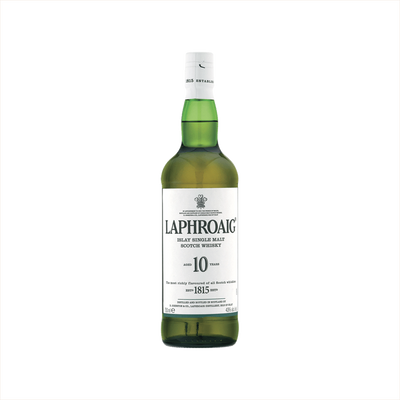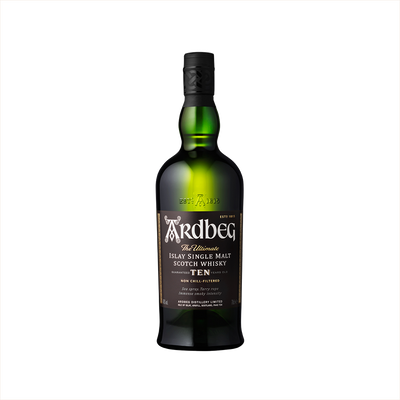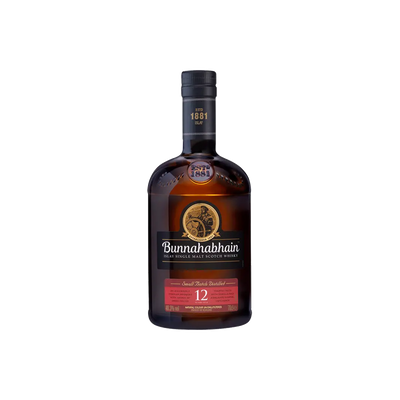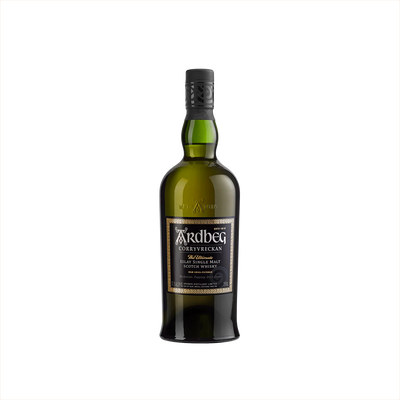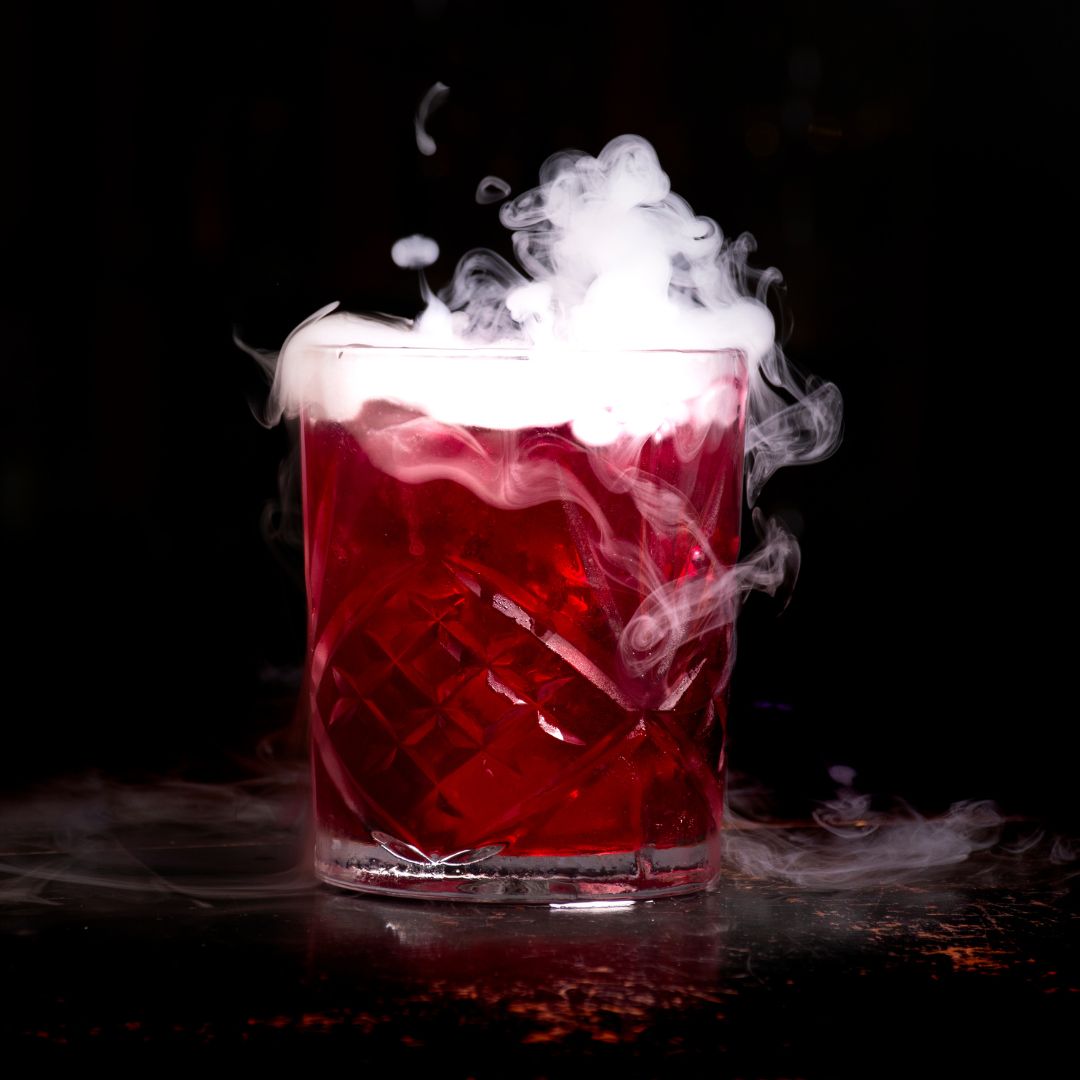Islay Single Malt
What is Islay Single Malt?
Islay Single Malt is a distinctive category of Scotch Whisky produced exclusively on the Scottish island of Islay, located off the west coast of Scotland. This whisky must be made entirely from malted barley at a single distillery and aged for a minimum of three years in oak casks on the island itself. Islay Single Malts are renowned for their bold, smoky character derived from peat smoke used during the malting process, though the intensity varies significantly between the island's eight active distilleries, ranging from heavily peated expressions to more subtle, maritime-influenced whiskies.
Learn More About Islay Single Malt
What makes Islay Single Malt unique?
Islay single malts stand apart from all other Scotch whiskies through their distinctive maritime character, shaped by the island's exposed Atlantic position where salt spray and seaweed influence every drop. The peat used to dry the malted barley comes from ancient bogs rich with maritime vegetation, creating those signature smoky, medicinal, and briny flavors that can range from gentle coastal whispers to full-throttle phenolic intensity. While Highland and Speyside whiskies might offer elegance and fruit, and Lowland expressions provide gentle approachability, Islay delivers an unmistakable combination of smoke, sea air, and earthy complexity that makes these whiskies instantly recognizable to anyone who's ever tasted them.
How is Islay Single Malt made?
Islay single malt whisky starts with malted barley that's dried over peat fires, which gives these Scotch whiskies their signature smoky character - though the amount of peat used varies dramatically between distilleries. The malted barley gets mashed, fermented with yeast, and distilled twice in copper pot stills before aging in oak barrels for a minimum of three years. What makes Islay whiskies so distinctive is their coastal location, where the sea air and island climate influence the maturation process, adding briny, maritime notes to complement that famous peat smoke.
How do you drink Islay Single Malt?
Islay single malts are most commonly enjoyed neat or with just a splash of water to open up those complex smoky and briny flavors that make these whiskies so distinctive. While some folks enjoy them on the rocks, the ice can mute the intricate peat smoke and maritime character that Islay is famous for. These powerful, peated whiskies rarely appear in cocktails since their bold personality tends to dominate other ingredients, though adventurous bartenders occasionally use them in smoky variations of classics like Old Fashioneds or Blood and Sand cocktails.
How do I choose a good Islay Single Malt?
Start by considering your smoke tolerance—if you're new to peated whiskies, look for lighter expressions like Bunnahabhain or Bruichladdich's unpeated bottlings before jumping into the heavy hitters like Ardbeg or Lagavulin. For cocktails, choose moderately peated malts like Bowmore or Caol Ila that won't completely overpower other ingredients, while reserving the intensely smoky bottles for neat sipping where their full character can shine. Age statements matter too—younger Islay whiskies tend to be more aggressive and work well in bold cocktails, while older expressions develop complexity that's best appreciated on their own.
Nutritional Information
Typical Calorie Range per Ounce: 64-70 calories
Typical Carbohydrate Range per Ounce: 0-0.1 grams
Typical Sugar Range per Ounce: 0 grams
Typically Gluten Free: Yes
While most Islay single malts are considered gluten-free due to the distillation process that removes gluten proteins, individuals with celiac disease or severe gluten sensitivities should always check detailed product information and consult with their healthcare provider to confirm gluten-free status for specific brands and expressions.
Scrolled this far? Your reward? Islay Single Malt trivia!
- Islay whisky saved the island from bankruptcy in the 1800s. When kelp harvesting collapsed and tenant farmers couldn't pay rent, distilleries became the economic lifeline. Lagavulin literally kept the lights on by employing locals and paying taxes that funded schools and roads. Without whisky, this remote Scottish island might have been completely abandoned.
- The legendary peat that flavors Islay whiskies contains 4,000-year-old heather and bog myrtle. Each handful of peat burned during malting releases aromatic compounds from ancient vegetation that grew when Stonehenge was being built. You're literally tasting prehistoric Scotland in every sip of peated Islay single malt.
- Ardbeg distillery once doubled as a smuggling headquarters. During the 1800s, the remote Kildalton coastline became a hotbed for illegal whisky operations. Ardbeg's founder John MacDougall allegedly used secret caves and hidden boat landings to avoid excise men. Some say those old smuggling tunnels still exist beneath the distillery grounds.
- Islay's water sources flow through million-year-old rock formations. The island's ancient geological structure filters rainwater through layers of quartzite and schist, picking up distinctive mineral profiles that can't be replicated anywhere else. This explains why moving an Islay distillery to the mainland would fundamentally change the whisky's character.
- Local seaweed gatherers once traded kelp for whisky rations. Coastal workers collecting seaweed for iodine production received daily whisky allowances as part of their wages. This tradition created Islay's famously discerning local palates – workers knew instantly if a distillery was cutting corners because their daily dram was their quality control system.
Higher-proof spirits can be intense. Mix carefully, taste thoughtfully, and enjoy responsibly.
Gift message (optional)

